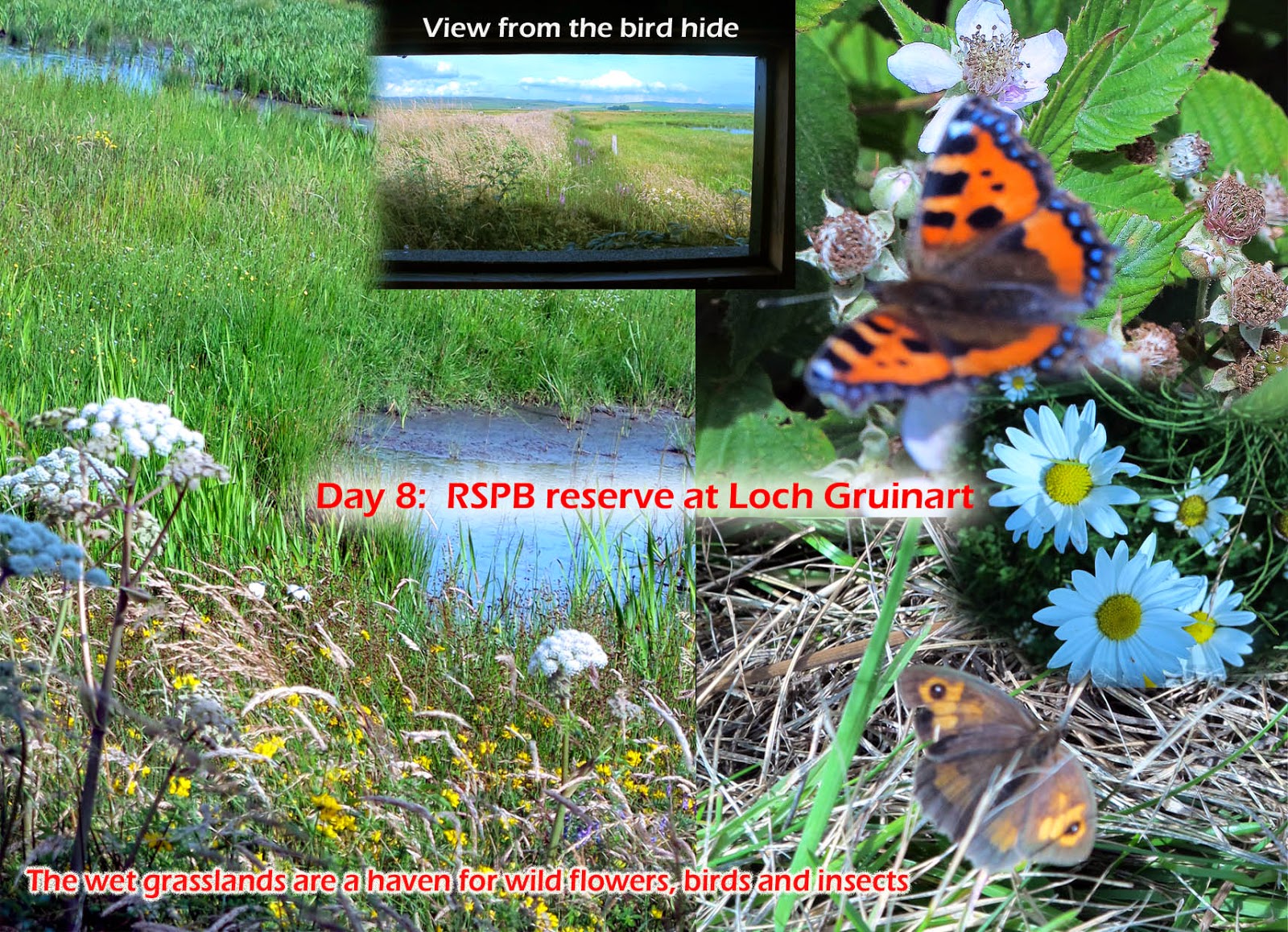Wednesday 31st July
Colonsay is another island of the inner Hebrides that promised an exciting journey to a new environment, and I hoped to grab its essence in the brief day-trip planned. Small in size, Colonsay measures about 10 miles long and 3 miles wide, has ‘a population of 144 inhabitants’… give or take the inevitable fluctuation due to the occasional birth and death since the last census, and boasts a treasure trove of outstanding natural scenery, archaeological remains, flora, fauna and bird-life. We set sail north from Islay’s Port Asking, for the port of Scalasaig, with Kate’s car on board the ferry, to enable us to conveniently navigate around the narrow lanes (motorhome driving not advised!)To gain some contextual background to Colonsay, we first called into a small roadside exhibition housed in a stone cottage, and I learnt that the Vikings inhabited the island 1,000 years ago, and remains of their artefacts have been recovered over the centuries. The stone crosses and grave markers on the island also give testimony to the story that St Columba who brought Christianity to Scotland, had visited the area. A fine example of an ancient stone cross was seen at Colonsay House (of which more later). A delicious picnic lunch was taken looking down on the near-deserted Kiloran Bay, where cattle grazed on the tufts of grass that merged with the white sandy beach below. Ruskin wasted no time in becoming acquainted with the curious bovine beasts that seemed to be an integral part of this picturesque natural art installation and placed there with the expressed purpose of posing for the photographer’s lens.
Our final visit was to the tidal causeway called An Traigh: ‘The Strand’, that links Colonsay to the neighbouring island of Oronsay, and although it was sadly cut off by a narrow strip of water when we arrived, it was yet another place of interest with a unique landscape and quality of light that entices the viewer to explore further. Just a couple of facts to draw me to its shores: apparently it has the remains of a 14th century priory and together with Colonsay is home to about 50 colonies of the only native species of honeybee in Britain. I reconciled myself to missing the walk over to Oronsay by taking many photos of the abundant seaweed and rock formations with their rich and varied colours, forms and textures.
All too soon our time on the island was drawing to a close and we headed back to Islay on the ferry. Thank you Colonsay, an enchanting little island with many fascinating stories to reveal… a place that is still surprisingly largely unspoilt by the connections that humans have made with it over the centuries: a special place indeed.











